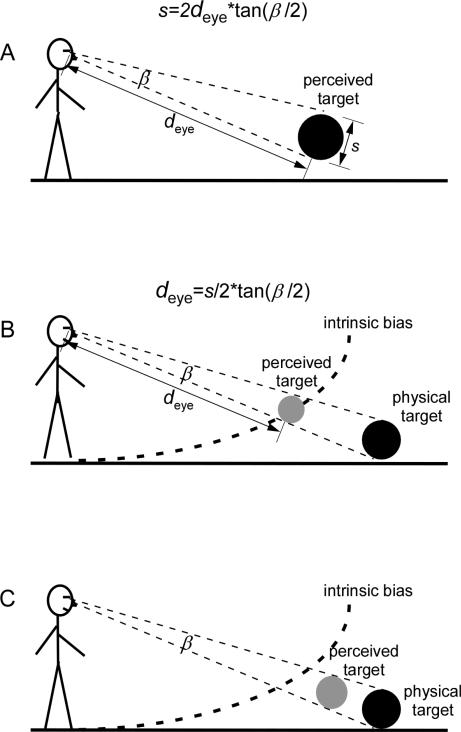Figure 2.
Relationship between perceived distance and perceived size. (A) The well-known size-distance invariance hypothesis (SDIH) states that the perceived size (s) of a target is proportional to the perceived target distance (deye). (B) To estimate the perceived target location in the dark, we can derive the perceived eye-to-target distance (deye) by measuring the perceived target size (s). Should the intrinsic bias contribute to size perception in the dark, the estimated location will be found about the curved profile of the intrinsic bias. (C) If the knowledge of target size can affect space perception, the perceived target location will deviate from the intrinsic bias that is revealed without the knowledge of target size.

